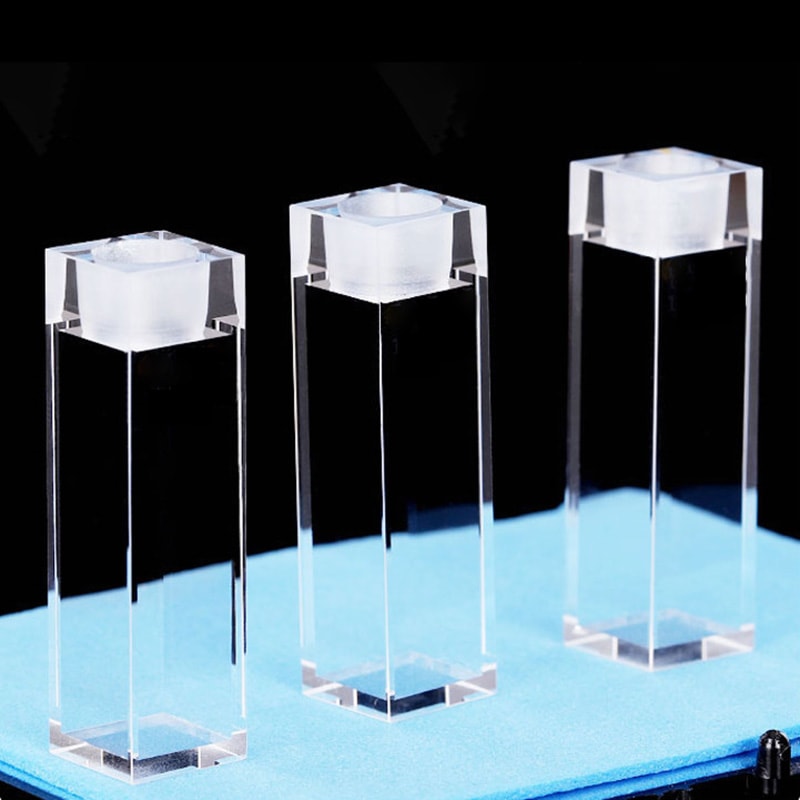How to Improve Precision with the Appropriate Cuvette Size
How to Improve Precision with the Appropriate Cuvette Size
Blog Article

The Great things about Cuvettes and Quartz Vials in Clinical Study
In clinical study, the reliability and consistency of sizes are paramount, especially in fields like spectroscopy, chemical analysis, and biology. One critical component that ensures detail in these reports could be the cuvette, especially quartz vial. Understanding the advantages of cuvettes and the benefits of using quartz vials can significantly influence the end result of tests and laboratory work.
Accuracy in Spectroscopy
Cuvettes are important for holding liquid samples in a variety of diagnostic devices, such as spectrophotometers. They measure the absorbance or indication of mild through an example, and the cuvette provides whilst the container for the taste during analysis. The size and substance of the cuvette enjoy a crucial position in ensuring the accuracy of the measurements. Quartz vials, particularly, present extraordinary visual quality, enabling exact light transmission across a wide range of wavelengths, including uv (UV) light. This makes quartz vials a great selection for spectroscopic studies, wherever precision is critical.
Durability and Substance Resistance
Quartz vials stick out due to their durability and opposition to hard chemicals. Unlike plastic cuvettes, quartz vials are less inclined to weaken or respond with substances in the test, ensuring that the results of the experiment remain unaffected by possible contamination. That characteristic makes quartz vials specially helpful in environments where extreme solvents or large conditions are involved. Their capability to resist severe conditions without diminishing the strength of the taste is among the primary factors they're favored in lots of lab applications.
Accuracy in Measurement and Shape
How big is a cuvette is not just a one-size-fits-all situation. The aspect of the cuvette, such as their path length, influences the quantity of the test and the total amount of gentle that passes through. Picking the right cuvette size for the particular experiment guarantees that the email address details are perhaps not skewed because of below or over-concentration of the sample. Quartz vials come in many different sizes and shapes, letting scientists to choose probably the most suitable solution based on the demands of their experiment. That flexibility plays a part in more appropriate information and permits greater get a grip on around fresh conditions.
Visibility and Mild Sign
Quartz is known for its extraordinary openness, especially in the ultraviolet (UV) and obvious mild spectra. This makes quartz vials perfect for used in devices that require apparent visual routes, such as UV-Vis spectrophotometers. The remarkable gentle transmission attributes of quartz make sure that the light passes through the taste with minimal dropping or assimilation, resulting in more precise readings. For experiments that need large accuracy, quartz vials provide a distinct gain over other materials.
Long-Term Consistency
When in study laboratories, it is crucial to have reliable methods that maintain their reliability around time. Quartz vials are not only chemically immune but additionally highly sturdy, indicating they're less inclined to experience wear and tear. That long-term stability ensures that analysts can use quartz vials for extensive intervals without worrying about degradation or the necessity for frequent substitutes, adding to cost-effectiveness in the long run.
In conclusion, both cuvettes and quartz vials offer a selection of advantages that increase the product quality and precision of lab experiments. From their superior optical quality to their chemical resistance and longevity, these instruments are vital in clinical research. By choosing the best cuvette size and applying quartz vials, researchers can assure precise sizes and achieve more reliable effects in their studies. Report this page